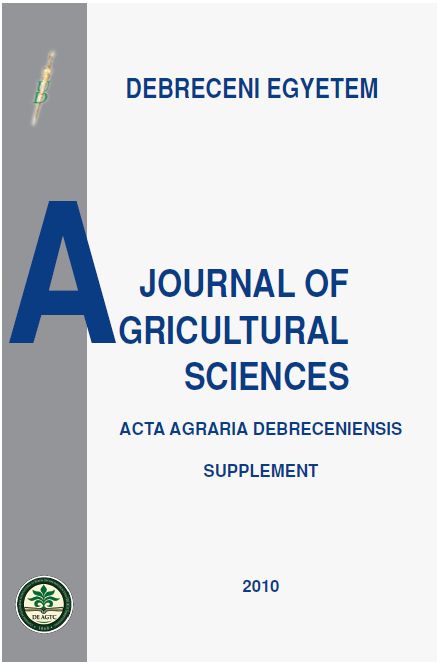The irrigation influence under the soil, microclimate and plants in maize from Crişurilor Plain
Authors
View
Keywords
License

This work is licensed under a Creative Commons Attribution 4.0 International License.
How To Cite
Abstract
The paper is based on the researches carried out in the long term trial placed on the preluvosoil from Oradea in 1976, for establishing
the soil water balance. In the irrigated variant the soil moisture was determined 10 to 10 days for maintaining the soil water reserve on
irrigation depth (0 – 50 cm for wheat and bean, 0 – 75cm for maize, sunflower, soybean, sugarbeet, potato and alfalfa 1st year and 0 – 100
cm for alfalfa 2nd year) between easily available water content and field capacity. Thus, an average irrigation rate of 2560 m³/ha was used
in the 9 experimental crops. The average of the annual rainfall for the 1976 – 2008 period was of 625.0 mm. The technologies used were
correlated with the needes of the crops, such as melioration crop rotation, chemical fertilizers in accordance with the chemical export on the
yield, manure (40 t/ha) was used in potato and sugarbeet. After 33 years of the irrigation use the soil structure degree (38.62%) did not
decrease when compared to the unirrigated maize – wheat crop rotation (37.01%). Bulk density, total porosity, penetration resistance and
hydraulic conductivity have worse values than the ones in the unirrigated variant. The humus content is very close to the humus content
determined in 1976, the phosphorus and the potassium content increased very much in comparison with the initial content (117 ppm vs 22.0
ppm); (180.0 ppm vs 102 ppm). The use of the adequate fertilization system and of the irrigation water with a good qaulity did not determine
a decrease of the pH value of the soil. The irrigation determined the improve of the microclimate conditions, the increase of the plant water
consumption, yield gains very significant statistically and higher protein content of the maize grains.

 https://doi.org/10.34101/ACTAAGRAR/I/8400
https://doi.org/10.34101/ACTAAGRAR/I/8400